Top 15+ Most Beautiful Sand Dunes in the U.S
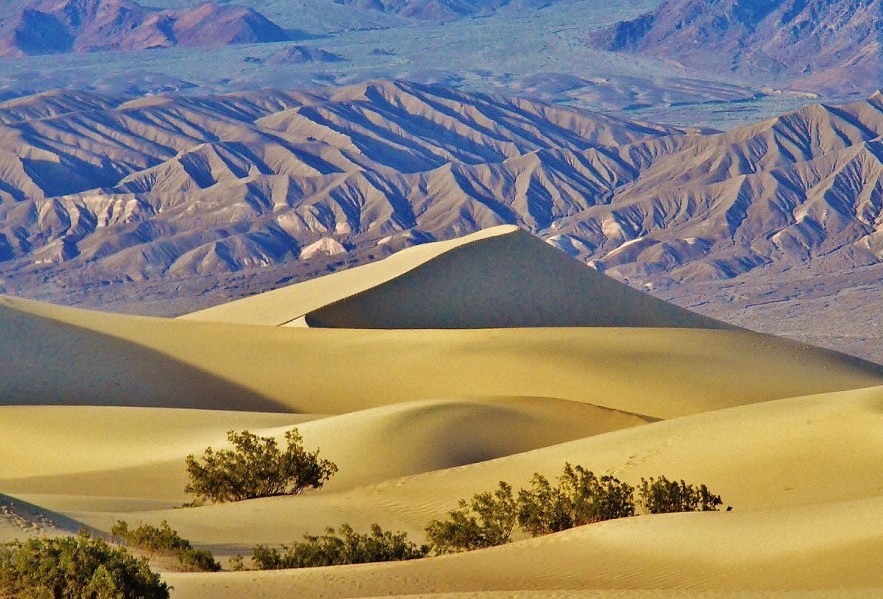 |
| Most Beautiful Sand Dunes in the U.S |
Sand Dunes in the United States
Dunes are ridge- or mound-shaped landforms that are usually made of sand, though occasionally they are made of different kinds of sediment. Sand accumulation over a long period of time in one place is frequently the result of wind and water processes.
There are five different kinds of sand dunes, and the way they form depends on the wind, the vegetation, and the size of the sand grains.
Dunes frequently occur in large groups or dune fields, some of which are over a hundred square miles in size. Because of the specific environment and surrounding landscape requirements for their formation, they are frequently found in coastal environments.
Dune fields can also be found inland, particularly in areas where there is little or no rain for most of the year.
Where are Sand Dunes Located in the United States?
Dune fields are relatively uncommon in the United States and are most frequently found in the southwest desert regions of the nation. These include the Mesquite Flat Sand Dunes in Death Valley, eastern California, and the Great Sand Dunes in southern Colorado, both of which are regarded as some of the biggest and most impressive dune fields in the United States.
Numerous other dune fields can be found in regions of Texas, Nevada, Arizona, Utah, New Mexico, and states that receive little precipitation and frequently experience lengthy dry seasons. Dunes can be found in some of the prairie-like regions of the United States, such as the sizable Nebraska Sandhills.
Along the United States' coastline, particularly between Barview and Florence in Oregon, in some of the Great Lakes, and sporadically along the east coast, sand dunes can also be found.
How are Sand Dunes Created?
Whether sand dunes are found in the desert or near the coast, both wind and water processes typically work together to create them. Sand particles are picked up by the wind, carried over a distance, and then dropped in a depression or up against a sizable structure like a hillslope or mountain range. This is especially prevalent in dryland areas because there is less surface moisture there, making it easier for the wind to easily loft large amounts of sand particles into the air.
There are affiliate links in this article. Without charging you anything extra, we might get a small commission if you click a link and buy something. For more details, please see our disclosure policy. My views are mine alone.
What is the Most Popular and Beautiful Sand Dunes in the U.S - Top 15
1. Great Sand Dunes National Park, Colorado
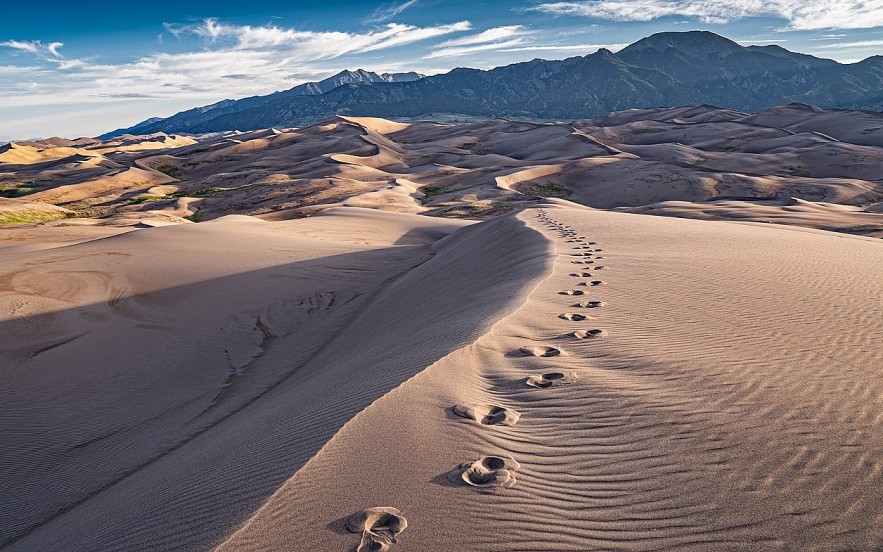 |
| Colorado’s Great Sand Dunes National Park |
The Great Sand Dunes National Park in Colorado is home to the vast majority of tourists who visit sand dunes in the United States. Additionally, they are the tallest in North America. The dunes are four hours from Denver, but United Airlines flies to the smaller airport in Alamosa, where you can fly.
For $25 per vehicle, you can enter the park and have access for seven days straight. Purchasing the America the Beautiful annual pass, which costs $80 and gives you access to all National Parks, makes more sense if you frequently visit national parks. Although the park is open all year round, entrance fees are only collected during the spring, summer, and fall or when the visitors center is open in the winter.
The dunes here are accessible for hiking, sandboarding, and sledding. Sand sleds and sand boards cannot be rented inside the National Park, so make sure to get them outside the park. The Oasis Store is 4 miles away from the visitor center and is the closest store, but it is only open from March 1 through October 31. Other options include Spanish Peaks Outfitters (year-round), Kristi Mountain Sports (year-round), Spin Drift Sand Board Rentals (March-October), Sand Dunes Swimming Pool and Recreation (year-round), and Spin Drift Sand Board Rentals. Kids can obtain a Jr. Ranger badge because it is a National Park.
2. Imperial (Algodones) Sand Dunes, California
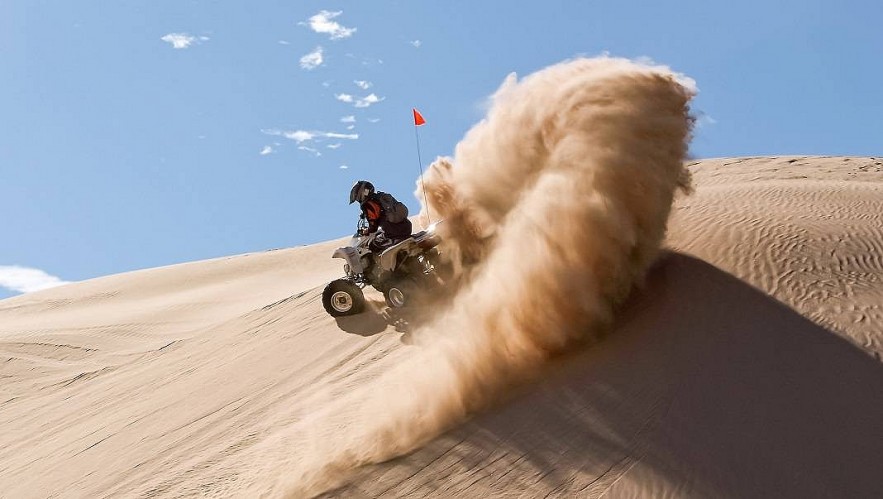 |
| Imperial Sand Dune |
These California sand dunes, also known as the Algodones Dunes, are two and a half hours east of San Diego. Click here to save up to 40% on some of San Diego's most well-liked attractions if you're in the area and interested in other nearby attractions. Actually, some of the scenes from Star Wars Episode VI: Return of the Hedi were shot here. From October 1 through April 15th, visitors to these sand dunes must purchase a permit, which costs $35 if purchased in advance and $50 if purchased on location. Also, they are good for seven days.
Here, you can go sand boarding, sledding, horseback riding, hiking, camping, ATVing, and dirt biking. Gilmore Off Road and Sweet Maries both offer sand board rentals. A few locations also provide ATV tours, such as Glamis Dunes Rentals.
3. White Sands National Park, New Mexico
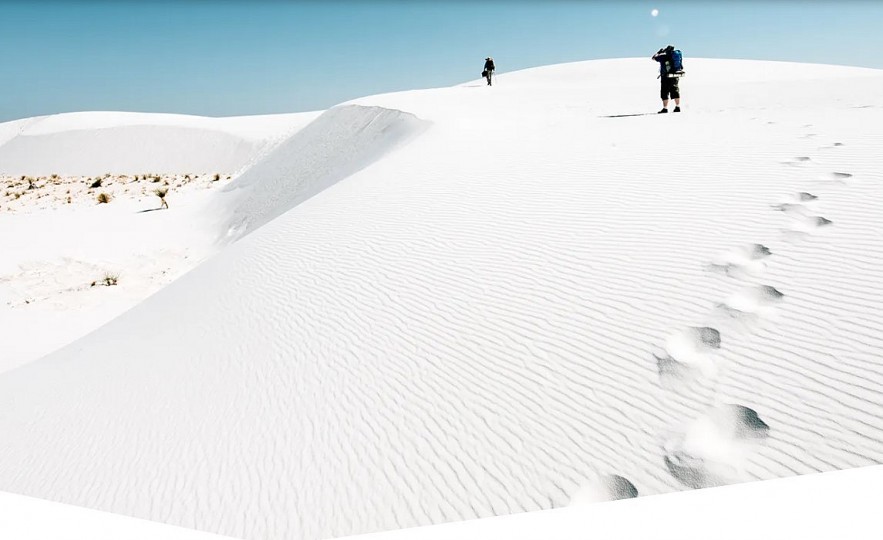 |
| White Sands National Park - Most Beautiful Sand Dunes in the U.S |
These sand dunes, which were formerly White Sands National Monument, were made into a National Park in 2019. These sand dunes, which are found in the Northern Chihuahuan Desert of New Mexico, are made of gypsum rather than quartz, giving them their brilliant white color. From Albuquerque, it takes 3 hours and 20 minutes to get there, and from Santa Fe, it takes 3 hours and 44 minutes. This national park's entrance fee is $25 and includes seven consecutive days of reentry.
You can sandboard and sled on these dunes as you can on all sand dunes. They are not available for rental at the park's gift shop, but you can buy them with the option to return them. They cost $10–$15, and if you return it, you'll get back $3–$5. Picking one up from the nearby Big 5 or Walmart is an alternative.
These sand dunes in the United States are distinctive because in addition to walking up them or sand boarding/sledding down them, there is also a scenic drive. It is 8 miles long and usually takes 45 minutes to finish. Unfortunately, this park does not offer any additional thrills, and ATVs are not permitted either.
4. Jockey’s Ridge State Park, North Carolina
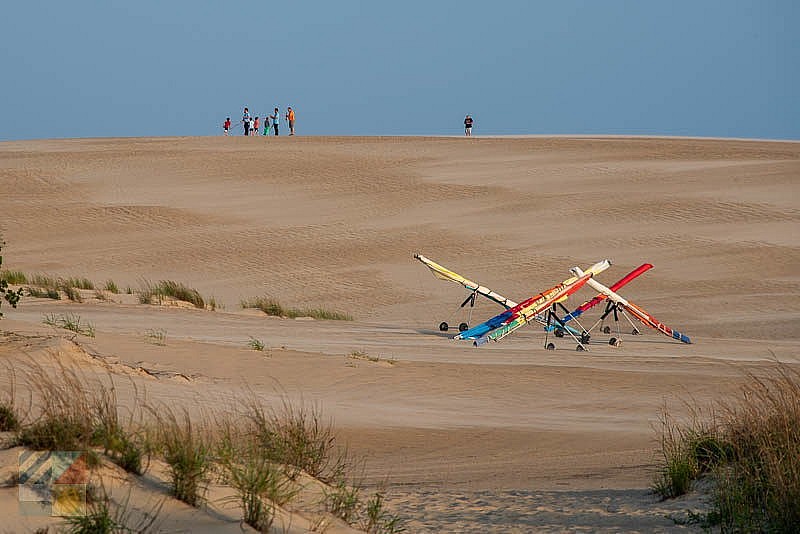 |
| Jockey’s Ridge State Park |
The tallest dunes on the East Coast are found in Jockey's Ridge State Park in North Carolina's Outer Banks. With the exception of Christmas Day, the park is open all year long. It does, however, have opening and closing times, so be sure to check those since admission is free.
You can go hang gliding here and even take lessons at Kitty Hawk Kites, in addition to sandboarding, which is undoubtedly one of the most popular activities on sand dunes. What an incredible sand dune experience, and yes, kids can take lessons here as well; they've even taught 4-year-olds! Additionally, they rent out sandboards, which cost $40 for a full day or $25 for 1-4 hours.
5. Coral Pink Sand Dunes State Park, Utah
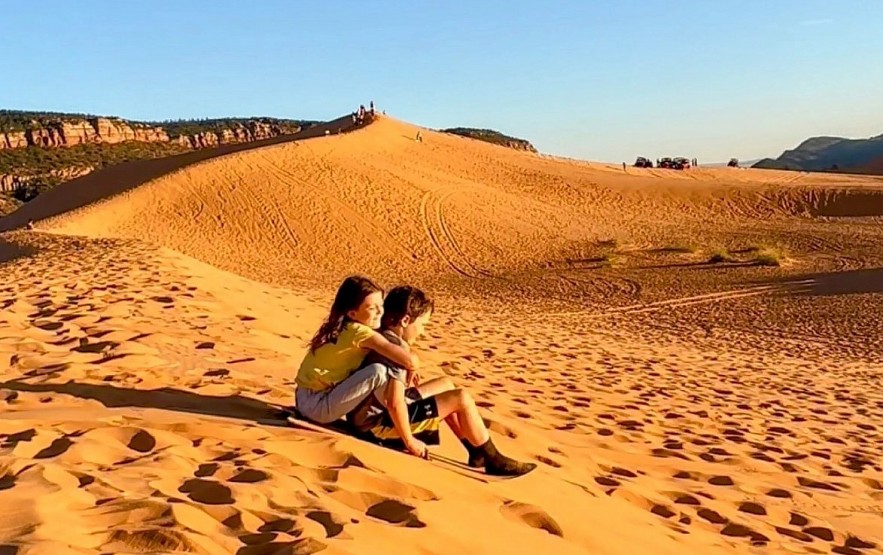 |
| Coral Pink Sand Dunes State Park |
We strongly advise including a visit to the Coral Pink Sand Dunes on trips to either Zion National Park or Bryce Canyon National Park since they are in Kanab, Utah, just an hour and 90 minutes apart. The city where it is located, Kanab, Utah, has a ton to offer in terms of activities, so you could easily spend a whole week there.
It costs $10 per vehicle per day to enter these sand dunes in the United States. Depending on whether you want hookups or not, it will cost you $25 to $35 per night to camp here.
In these dunes, you can hike, sandboard, sled, or ATV. At the visitor center, you can rent sand boards and sand sleds for $25 per day. The only business permitted to provide ATV tours inside the park is Coral Pink ATV Tours. Others have it listed on their website, but when you click on it, you are taken to nearby grassy dunes.
By going in the late winter or early spring when the landscape is covered in snow and the weather is ideal for winter tubing, you can avoid some of the crowds.
6. Oregon Dunes National Recreation Area, Oregon
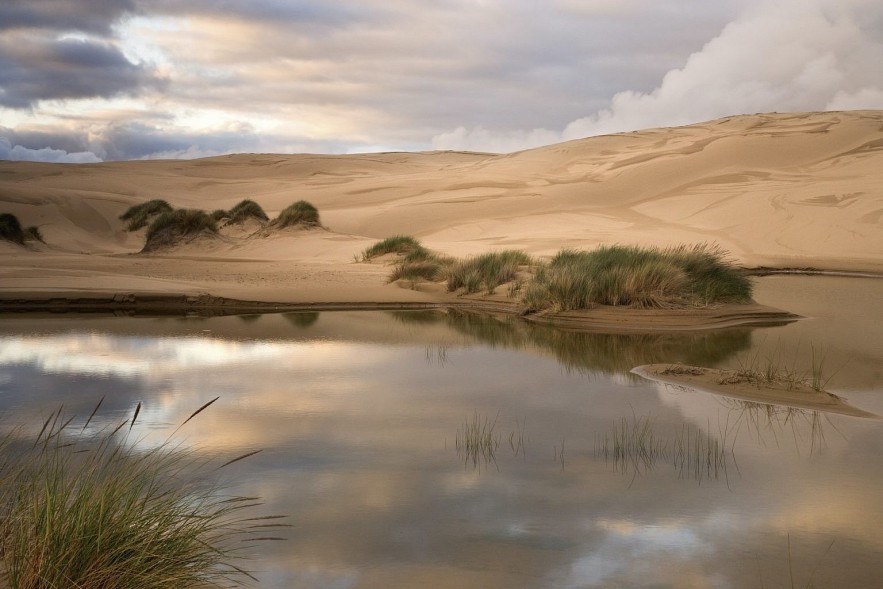 |
| Oregon Dunes National Recreation Area |
Three and a half miles southwest of Portland, in Reedsport, Oregon, is where you'll find the Oregon Dunes National Recreation area. Southwest Oregon Regional Airport, which is 33 miles away, is the closest airport.
These sand dunes are among the most popular in the country and are open all year. Here, you can go hiking, paddle by the dunes, sand boarding, birding, camping, and enjoy a variety of OHV riding experiences. There are also open dunes and beaches. Sand Master Park is the ideal location for sand boarding the dunes. These sand dunes have a $5 entrance fee.
The Oregon Dunes are the longest stretch of coastal dunes in North America and one of the longest in the world, stretching for about 50 miles from Barview in the south to Florence in the north.
These dunes are situated in a temperate climate region with high rates of rainfall, unlike the dunes in the southwestern United States. A significant amount of continuously eroding sediment, some of which is deposited onto the shore, is provided by the nearby Coast Mountain Range, which was uplifted only 12 million years ago.
Sand particles are picked up by summer winds and strong gusts from winter storms, which then deposit them along the coast. In addition, the sand is dredged from the nearby shallow seabed by strong waves and tidal currents and brought to the shore, where the wind blows it into dunes.
7. Dumont Dunes, California
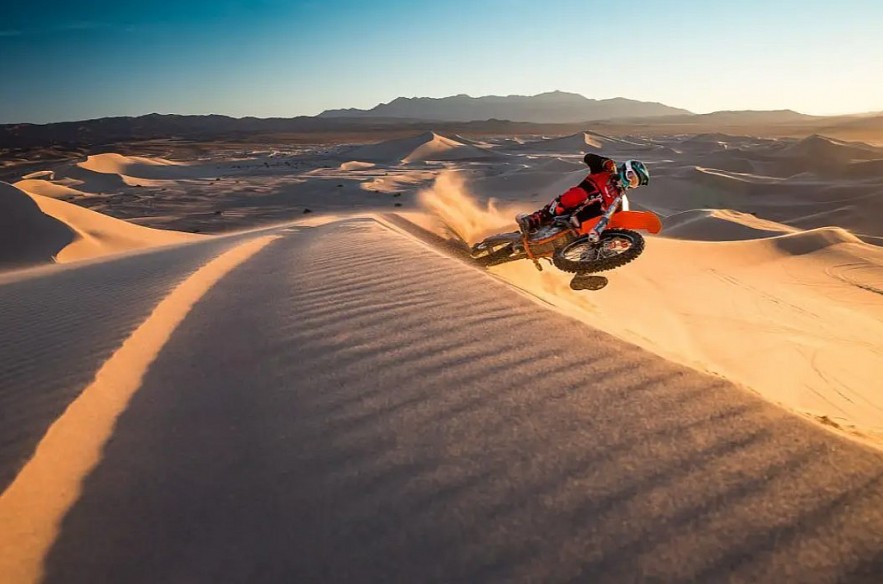 |
| Dumont Dunes |
The Dumont Dunes, a section of the Mojave Desert, are located just 40 minutes outside of Baker, California. Off-roading, hiking, camping, and even rock climbing are all possible here. The cost of a weekly pass to the dunes is $30 on non-holiday weeks and $40 on weeks that include Presidents Day, Martin Luther King Jr., MLK, or any other holiday.
The "North Pole" is a must-see while visiting Dumont Dunes, according to everyone. Some people believe the Dumont Dunes are not a good place for kids to play because they are among the steepest sand dunes in the United States. Little Dumont, which has smaller dunes, is a great place for families in light of this.
8. Mesquite Flat Sand Dunes, Las Vegas
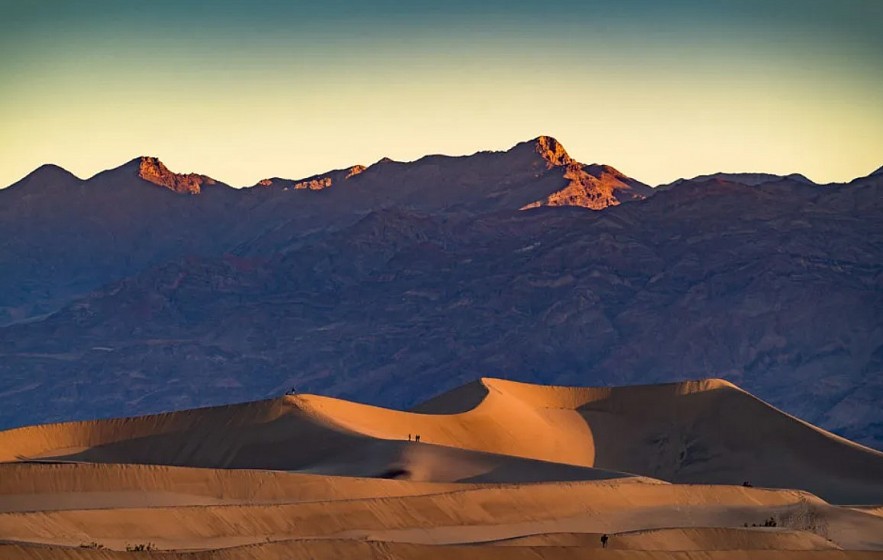 |
| Mesquite Flat Dunes |
Death Valley National Park is located just two hours outside of Las Vegas. There are a few sand dunes in the park, but Mesquite Flat Sand Dunes is the most well-known because it is the easiest to get to. The only dunes in the park where sand boarding is permitted are these and the Saline Valley Dunes.
Sand boards and sand sleds cannot be rented in the park, so bring your own in advance. Death Valley charges $30 per vehicle for seven consecutive days of entry if you want to see these dunes.
9. Little Sahara State Park, Oklahoma
 |
| Little Sahara State Park, Oklahoma |
With a name play on the Sahara Desert, Little Sahara State Park has 1,600+ acres of rideable 25′–75′ sand dunes. This park, which is in Waynoka, Oklahoma, about two hours from Oklahoma City, has it all, including RV and tent camping spaces, picnic areas, and showers.
Bring your own or rent one from a vendor off-site to dune buggy and ATV these dunes. It costs only $10 per person to participate in the fun. The park is open every day from 8:00 am to 4:00 pm, but the park office is only open during those hours.
10. Kelso Dunes in Mojave National Preserve, California
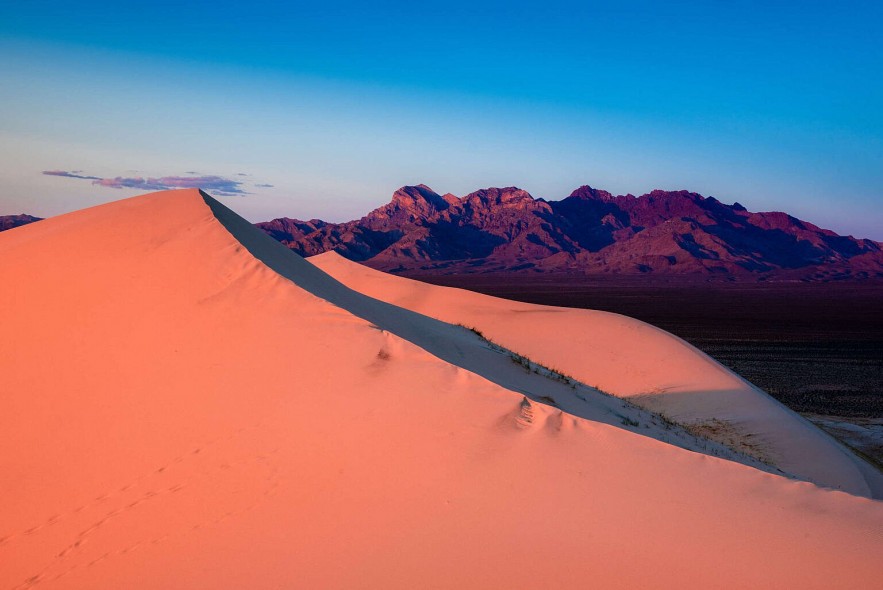 |
| Kelso Sand Dunes, Mojave Desert |
The Mojave Desert, which is close to Baker, California, is where you'll find the Kelso Dunes. There is no entry fee and it is available to the public every day of the year. As the sand is extremely hot and summer temperatures can reach 120 degrees, October to May is the best time to visit.
The best times to hike here are in the spring and fall because the 3-mile hiking trail through the dunes is not shaded. The established campsites allow for camping, and all spots are available on a first-come, first-served basis. Sandboarding is permitted at these Dunes but off-roading is not! These are really stunning dunes because they are over 600 feet tall.
These dunes are so enormous—they span 45 square miles—that it's likely you'll have a sizable portion of the area to yourself to explore.
11. Sleeping Bear Dunes, Michigan
Are there beachside sand dunes in the United States? This is what you will discover if you visit Sleeping Bear Dunes National Lakeshore because the dunes are situated directly on Lake Michigan. The park's entrance fee is $25 per vehicle. In addition to climbing the sand dunes, you can also bike, hike, kayak, or canoe here because it's on the water.
Large sand fields also cover a significant portion of the eastern shore of Lake Michigan. The Sleeping Bear Dunes, a dune field perched above a sizable bluff that borders the lake, is one of these. The tallest dune rises above the lake's surface by more than 300 feet at its highest point.
It's interesting to note that glacial processes primarily created this dune field. Giant ice sheets that covered the region during the last glacial maximum turned the rock underneath into sand and other soft sediment. Around 12,000 years ago, the ice retreated from the region, leaving behind sizable dune fields. The shoreline along the bluffs below also blows more sand grains onto the Sleeping Bear dune field, allowing more sand to accumulate high above the lake.
12. Eureka Sand Dunes in Death Valley National Park, California
 |
| Eureka Sand Dunes |
Death Valley National Park's Eureka Sand Dunes rise an impressive 600 feet above the valley floor and are surrounded by the even higher Last Chance Mountains, giving the area a stunning Martian-like appearance. These dunes support a surprising amount of plant life, including rare species that are found nowhere else on earth, despite being the hottest and driest place in North America.
Those who are prepared to make the 40-mile drive down a dirt road to the dunes will be rewarded with remote camping, hiking, and stargazing opportunities.
13. Indiana Dunes National Park, Indiana
On the southern end of Lake Michigan, a 15-mile stretch of shoreline is covered by Indiana Dunes National Park. The Park is a diverse and one-of-a-kind destination thanks to its 50 miles of untamed trail that wind through wetlands, across enormous dunes, and over cliffs.
Along with hiking, there are 37+ miles of connected biking trails, extensive stretches of sandy beaches, excellent fishing and paddling opportunities, and a ton of guided tours available for those interested in learning more about the dunes and the area.
If you plan your trip well, you can take part in the annual Indiana Dunes Outdoor Adventure Festival, which is a weekend jam-packed with outdoor adventures and usually takes place in September.
14. Sleeping Bear Dunes National Lakeshore, Michigan
Dunes of Sleeping Bear The National Lakeshore is renowned for its enormous, scalable dunes that almost straighten out of the Lake Michigan shoreline. This region is an outdoor enthusiast's paradise with miles of sandy beaches, soaring bluffs, lush forests, and crystal-clear lakes. The Dune Climb, which can be found in the park north of Empire on M-109, is one of the most well-liked activities there. For stunning views of the lake, climb to the top of the imposing white sand dune.
In addition, Sleeping Bear is home to North Manitou Island and South Manitou Island, both of which can be reached by ferry or private boat.
15. Bruneau Sand Dunes State Park, Southern Idaho
An hour's drive from Boise, on the banks of the lovely Snake River, is the Bruneau Sand Dunes State Park. The actual dunes are smaller than most of the other dunes on this list, but they are still worth visiting, particularly in the fall when the dunes are encircled by vibrantly colored changing foliage.
Visit the visitor center where you can rent a sandboard and see the local fossils from prehistoric times. Bring a fishing pole with you if you want to try your luck catching some trout in the lake below.
Sand Dunes in Death ValleyEastern California's Death Valley contains a number of dune fields. These dunes are situated in a similar sized depression, but this basin is much deeper and encircled by enormous mountain ranges that are higher than 6,000 feet. Infrequent, heavy rainfall events cause the mountains to erode and wash down large amounts of sediment, which is then deposited in the vast basin below. In the case of the Mesquite dunes, for instance, the eroding Grapevine Mountains to the north provide a plentiful source of sand, which is then blown into position by the dominant westerly wind. The sand accumulates against the mountains, creating an enormous dune field. Despite the fact that the tallest of the dunes rises 185 feet above the surrounding basin, they cover a vast area of 5,000 square miles. |
What are the Tallest Sand Dunes in the United States?
The Great Sand Dunes National Park in Colorado is home to some of the tallest dunes in the country, many of which rise more than 600 feet above the valley floor. The tallest is Star Dune, with a crest that rises to a height of 750 feet.
The entire dune field is quite large, covering about 30 square miles. The story of how these dunes were created is an excellent illustration of how wind and water processes combine to create a large dune field.
The San Luis Valley, a sizable basin bordered by two mountain ranges, contains the dunes that have grown up on the western side of the Sangre de Cristo Mountains. Sedimentary deposits that were washed into the basin during heavy rains and dried out afterwards fill the basin. The particles are then carried by the dominant westerly winds eastward, where they settle against the Sangre de Cristos mountain range.
Largest Sand Dune System in the Western Hemisphere
The vast Nebraska Sandhills, sometimes referred to as the Nebraska Sand Hills, cover an area of 20,000 square miles and are the largest dune system in the Western Hemisphere, not just in the United States. The prairie grass that grows there is densely covered, and this contributes significantly to the dune field's stability.
The Nebraska Sandhills, which are in north-central Nebraska, were created by glacial meltwater at the end of the last Ice Age, when meltwater from the nearby Rocky Mountains brought enormous amounts of sand and silt to the area. The dunes were formed as a result of wind activity and were later locked into shape by grass.
Largest Active Sand Dunes in the Arctic
The Great Kobuk Sand Dunes in Alaska are the biggest living sand dunes in the Arctic. These dunes, which are a remnant of the last Ice Age, rise out of the forest along the southern bank of the Kobuk River. Out of the original 200,000 acres of formed sand dunes, vegetation has gradually reclaimed all but 16,000 of them over thousands of years.
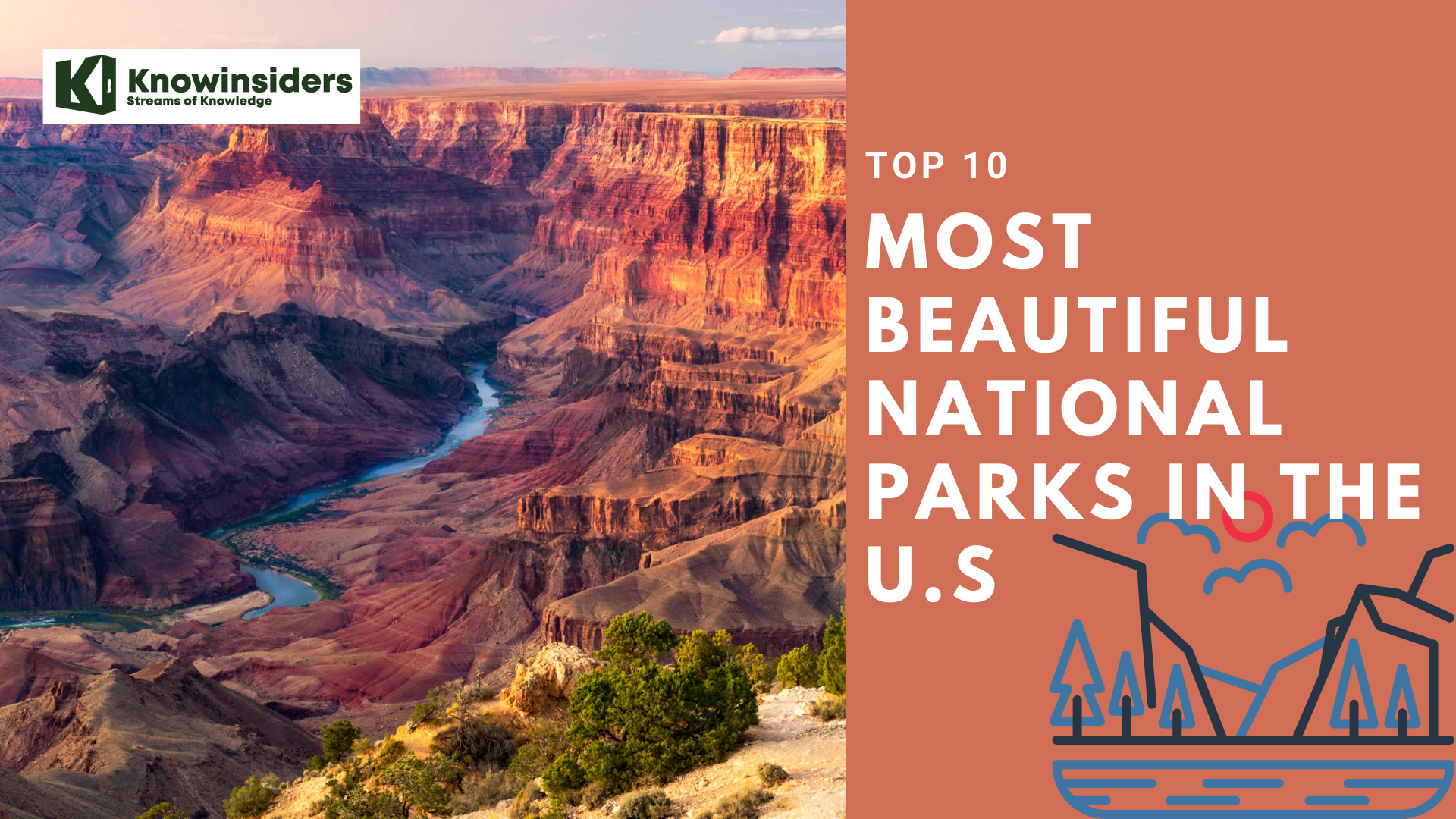 Top 10 Most Beautiful & Popular National Parks in the US Top 10 Most Beautiful & Popular National Parks in the US America is the home for many wonderful natural places, and here is our list of top 10 most beautiful national parks that you can visit ... |
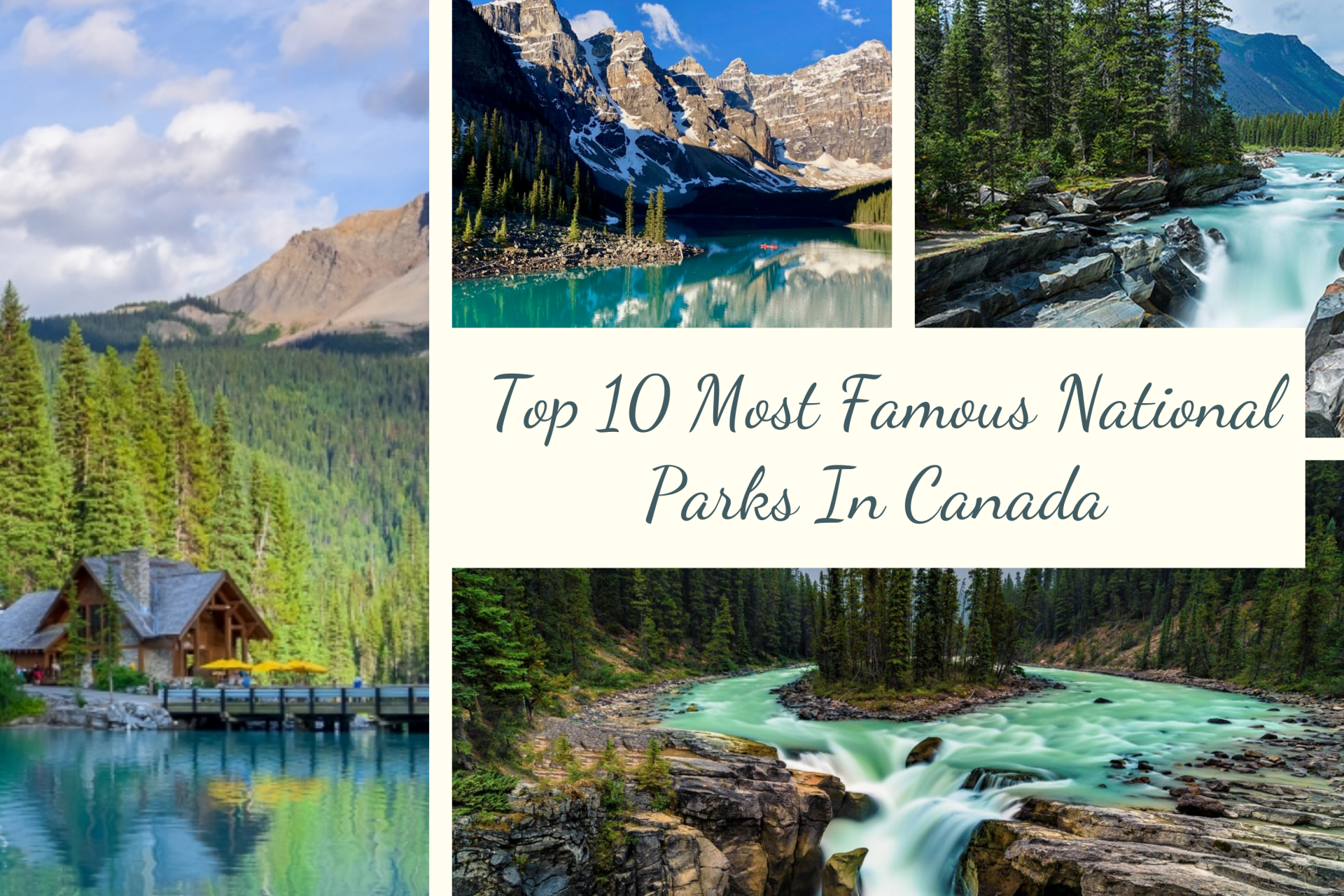 Top 10 Most Famous and Popular National Parks In Canada Top 10 Most Famous and Popular National Parks In Canada Canada currently has 39 national parks and 8 national park reserves that encompass a combined area of approximately 328,198 km2. |
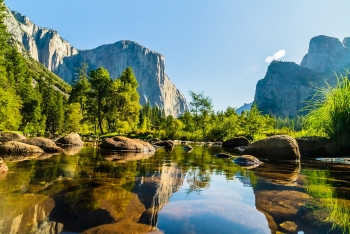 Top 20 Best & Most-Visited U.S National Parks For Upcoming Trips Top 20 Best & Most-Visited U.S National Parks For Upcoming Trips Americans visit national parks to record numbers in 2021 and is expected to explode in 2022. Here are the top 20 most visited US national ... |
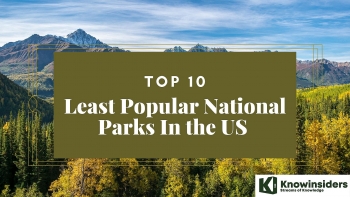 Top 10 Least-Visited National Parks In the US Makes You Surprised Top 10 Least-Visited National Parks In the US Makes You Surprised You've probably heard of the most well-known ones, like the Grand Canyon or Yellowstone, and you know that national parks are a popular tourist attraction ... |























